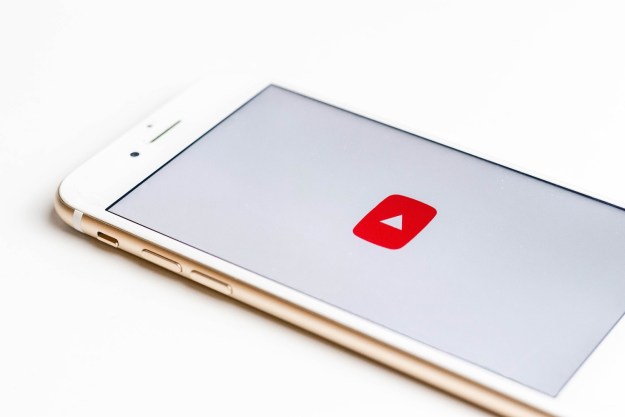 How many hours a day to you spend perusing your Facebook News Feed (and how many times do you refresh the page), envying your friends’ nonstop travel expeditions? Do you constantly check your phone for Twitter and Instagram updates from your hundred-or-so friends talking about their perfect lives with their significant others? Are you hesitant to log into your Pinterest account for fear of being sucked into a wormhole of fabulous outfits, zany DIY projects, and dreamlike desserts whose awesomeness you’re afraid of never being able to recreate? According to a recent survey, “Pinterest stress” is very real and present in almost half of motherkind.
How many hours a day to you spend perusing your Facebook News Feed (and how many times do you refresh the page), envying your friends’ nonstop travel expeditions? Do you constantly check your phone for Twitter and Instagram updates from your hundred-or-so friends talking about their perfect lives with their significant others? Are you hesitant to log into your Pinterest account for fear of being sucked into a wormhole of fabulous outfits, zany DIY projects, and dreamlike desserts whose awesomeness you’re afraid of never being able to recreate? According to a recent survey, “Pinterest stress” is very real and present in almost half of motherkind.
Out of the 7,000 mothers surveyed by TODAY Moms, 42 percent experience Pinterest-related stress, dreading that they can’t compete with other posters’ skills and imagination. Most of them have stayed up till the wee hours of the morning, endlessly clicking through photo after photo of fantastic-looking desserts that they end up burning or artistic crafts they ultimately buy pre-made at the store. They balk at the pressure of having to be perfect moms at the top of their game as well as Martha Stewart clones – and surprising to no one, this is difficult to do.
It’s not only Pinterest that causes stress in moms (or anyone, for that matter). According to Venture Beat, a survey led by affordable call provider Rebtel revealed that almost 20 percent of 1,632 American adults surveyed said that out of all the social networks, Facebook has the most negative effect on their mood, and another 20 percent confirmed that the site caused them the most anxiety. It’s all too easy to feel inadequate and unfulfilled when you check out the photos of your friends’ picturesque vacations you can’t afford or read their always-happy status updates.
But this social media-made stress might be affecting women in a different way than it is men. Women are the most active social media users and online shoppers. So what’s happening in our constantly connected age that’s making the fairer sex more anxious?
How do women use the Internet, anyway?
During this last week’s Internet Week New York, a panel discussed how women specifically use the Internet. According to the speakers, women are more inclined to focus on technology’s ability to improve life, compared to men who tend to hone in on technical specifications. “Women also love visualization and stories, not just features on a checklist, but things that really let them see value in their lives,” said Shelley Zalis, CEO of Ipsos Open Thinking Exchange. “When you go to tech labs, some are run by women, and it’s fascinating to see what they’re working on versus what the men are working on. Many of the labs I’ve seen are working on things like how to bring books to life for kids, making them more friendly and engaging. That’s in contrast to just gadgets and goggles.”
On the average, women are online 24.8 hours a month compared to men’s 22.9 hours.
The fact that women are using the Internet and social products to improve their lives and better themselves is pretty revealing in and of itself – that’s a heavy subject, and an ample undertaking. And, turns out, it’s not just what they’re using it for, but how much.
According to comScore, women are the digital mainstream, far more engaged with the Internet than men are, and more thorough and immersed when it comes to online shopping. Even those who are under the older female demographic are quickly affected – as soon as they are exposed to the Web and the entire social media experience, they almost always eagerly embrace it and it becomes a part of their daily routines. According to the report, on the average, women are online 24.8 hours a month compared to men’s 22.9 hours. There’s an even bigger difference between genders when it comes to the social Web, with 56 percent of adult women trumping 46 percent of adult men using the Internet for social means. 16.3 percent of the time women spend online is allotted to social networking, and the average is constantly rising as years go by and technology advances. Women of age 45 and above have been found by comScore the most responsible for the boom in social media platform usage, while girls of the 15 to 24 demographic are labeled the heaviest users with the widest social reach.
While time spent is surely a piece of the social media stress problem, it can only be part of the problem.
Social Media Anxiety Disorder; everyone suffers … especially women

- The inability to part with your smartphone, even for a short while
- The craziness you feel when you don’t immediately get a @reply for a tweet
- The fact that everyone at the dining table is on their phones, texting
- The way you tabs on all your social media accounts, refreshing every minute to see if someone comments on your posts
- That crappy feeling you get for being unfriended or losing followers
In preparation for last March’s National Day of Unplugging, @HealthyLiving and @GPSForSoul hosted a Twitter chat and asked participants to give sample symptoms of SMAD. Take a look at some of the responses – can you relate? If yes, then you probably need to take a social media break.
Don’t worry, you’re anything but alone. It’s not that hard to figure out that our excessive use of technology can cause mental breakdowns. It’s human nature to complain about anything and everything – a recurring migraine, a recent spat with a significant other, losing your job, someone’s opinions you don’t agree with, sometimes even things that ought to cause happiness but are failing for a number of reasons. The Web takes all of this information, magnifies it, and scatters it all over the place – you have no choice but to take it all in, in big doses that can certainly overwhelm one’s mind. This unavoidable reality is what makes SMAD very real. And it’s main victim? Women.
Women have always been stressed, the Internet just makes it worse
Studies suggest what we’ve always known: Compared to yesteryear, people are experiencing higher levels of stress today; all three studies conducted in 1983, 2006, and 2009 indicate that women – more than men – experience the highest level of stress.
“When you live in a culture that sexualizes young women … it is not very surprising that, when you give [them] the tools to objectify themselves, they use them in the same way.”
But the issue of stress goes beyond Twitter, Facebook, and basic social media use. It’s a pretty accepted fact that women experience more oppression than anyone else online – they are often victims of cyberbullying and online harassment, and there are thousands (if not millions) of young women who feel like nothing can be done about it. “When you live in a culture that sexualizes young women overwhelmingly, it is not very surprising that, when you give young women the tools to objectify themselves, they use them in the same way,” said Alice Marwick, an assistant professor of communication and media studies at New York’s Fordham University. More often than not, content centered on female violence propagated all over the interwebs can cause not just stress, but rather severe psychological and emotional traumas. It’s bothersome to think that something serious can come out of misguided social media use, but we’ve unfortunately seen it time and time again.
Cruel forums and cyberbullies aren’t the only ones targeting women: So are advertisers. They know just as well as we do how much time women spend on social media sites, what types of things (i.e., life-improvement) they’re searching for and interesting in, and that they’re also the biggest online shoppers. It’s a potent combination, one that has marketers foaming at the mouth. And if you think this information won’t be used to increasingly pressure women via online ads, you’re very wrong.
The cure? Laughing and logging off
It will probably take a whole lot of effort and education for the more serious “women on the Internet” concerns to be eradicated, and it may take more than just awareness and support when it comes to larger issues like cyberbullying, invasion of privacy, and online harassment to be remedied.

Stress caused by basic social media use is a lot easier to handle, as long as you are willing to alter your way of thinking. “I can spend hours browsing Pinterest, and sometimes that site convinces me that anyone can embark on any DIY project with fabulous results,” wrote Jenna Andersen, creator and editor of PinterestFail, a funny blog that encourages Pinteresters to have a healthy laugh at their mistakes. “This hasn’t been my experience, and I’m guessing it’s happened to [others] as well.”
“Something in me recognized the futility of comparing my life to what is essentially a neverending magazine.”
According to TODAY Moms, Andersen remains a fan of the site, but she no longer feels inclined to believe that the photos she sees represent anyone’s reality. “Too many women experience Pinterest-driven discontent to just dismiss it. But I struggled to understand why Pinterest was such a big deal for them, when it wasn’t for me,” wrote Anne of Modern Mrs. Darcy. “Something in me recognized the futility of comparing my life to what is essentially a neverending magazine.” At the end of her post, she recommended getting off Pinterest if it messes with people’s sanity too much.
Pinterest, Twitter, Instagram, and Facebook can be huge sources of frustration and envy. Do yourself a favor and stop treating online life as a competition but rather a source of inspiration – or get in on the joke. Sites like WTFPinterest, the aforementioned PinterestFail, and Regretsy show a more honest side to the insanity of some of what the Internet is telling us we’re capable of.
But if the social media stress of out of control, right now there’s really only one tried and true remedy: Log off for a little bit, ladies. Just log off.
Editors' Recommendations
- Here’s how to delete your YouTube account on any device
- Why is Twitter called X now? Here’s everything you need to know
- Instagram Threads: what you need to know, and how to sign up
- Meta already verified me to influence elections — so why do I have to pay for a checkmark?
- Instagram to soon let creators make NFTs and sell them to fans


